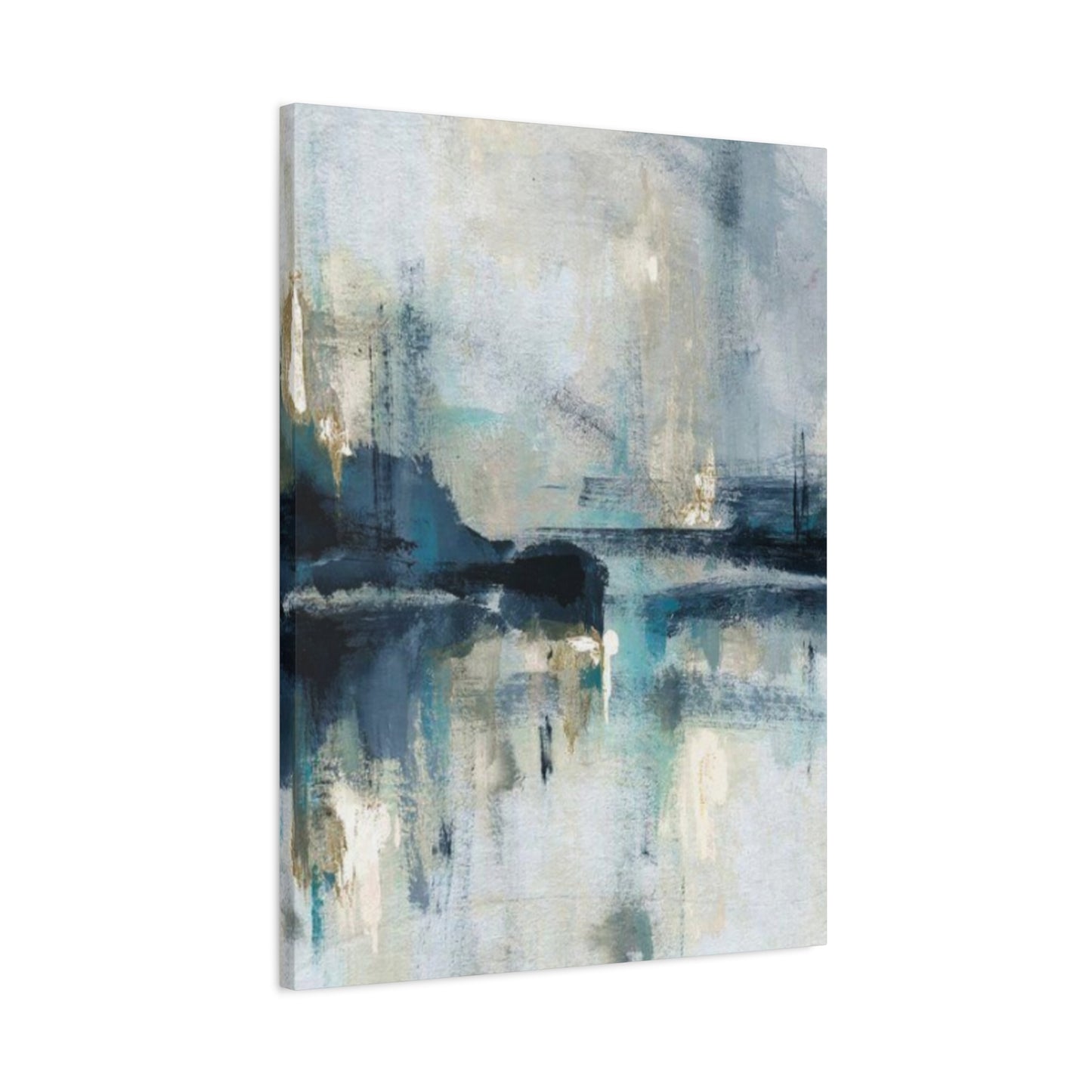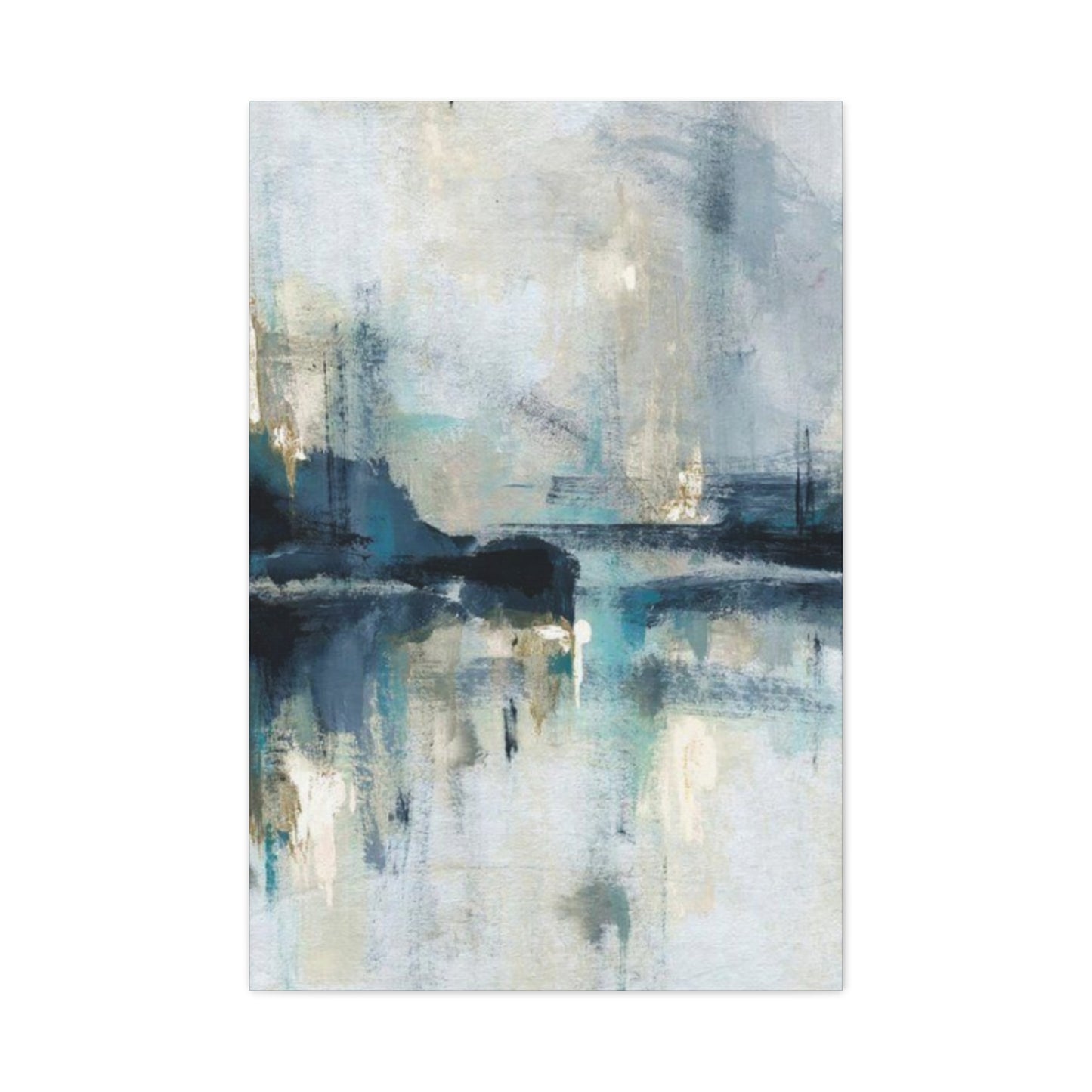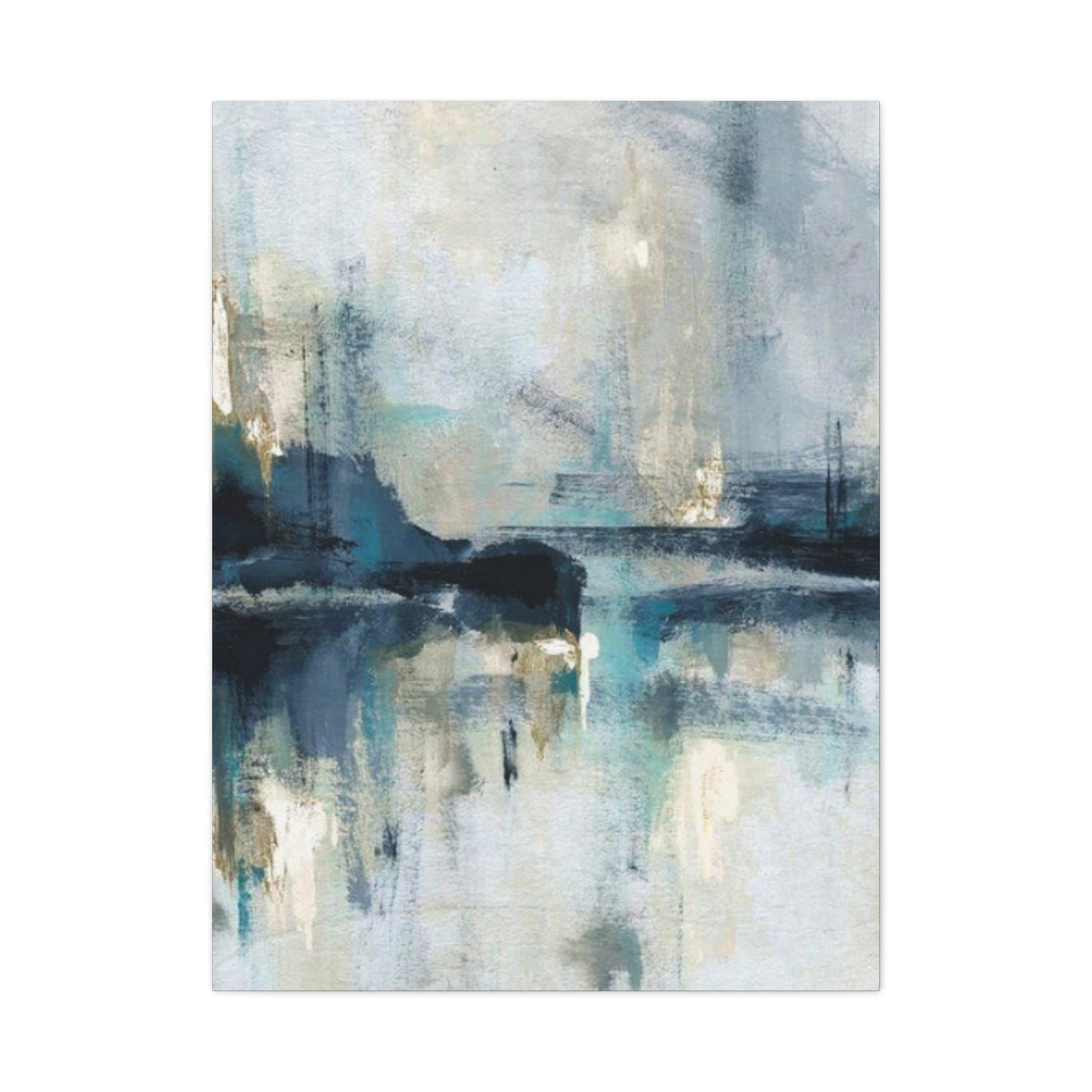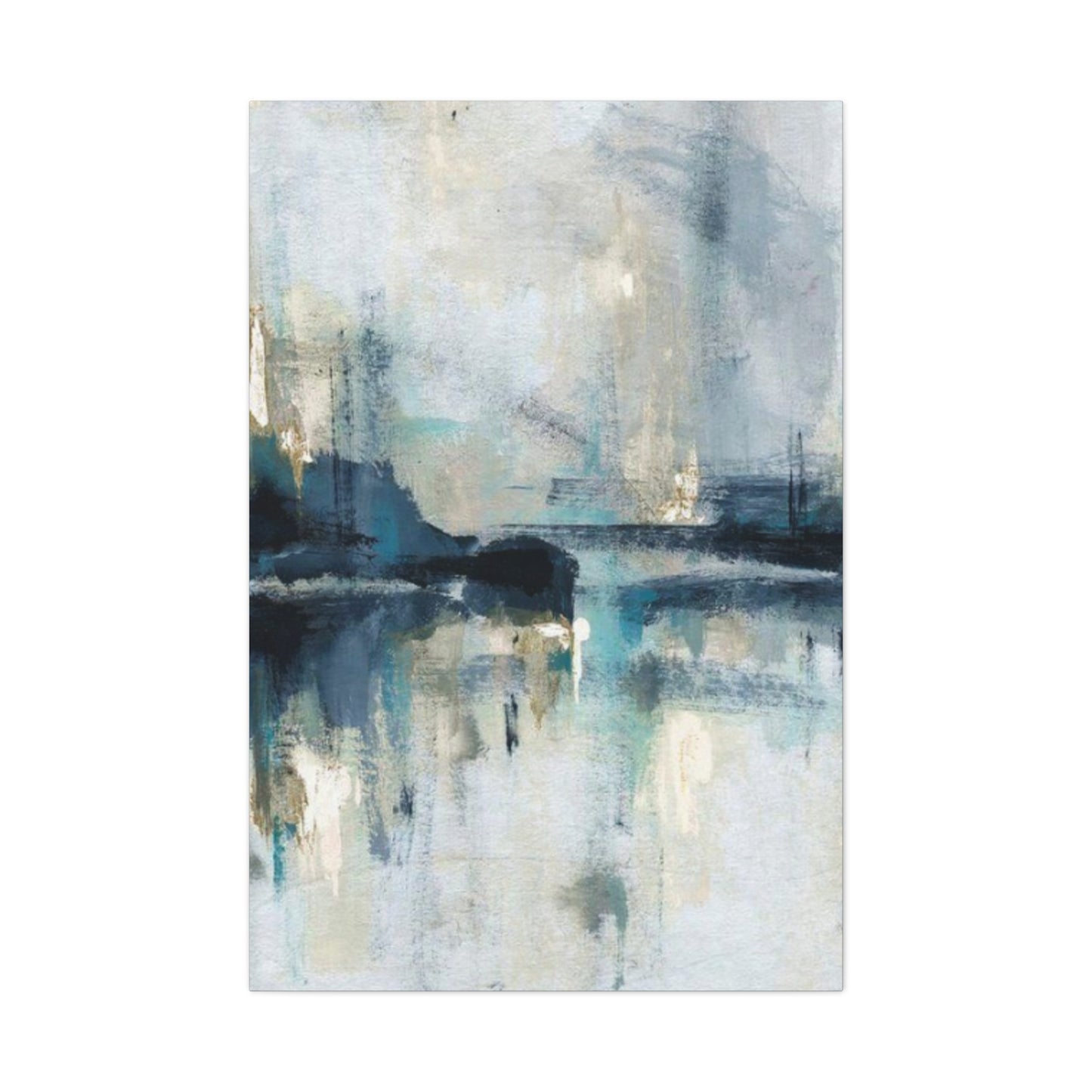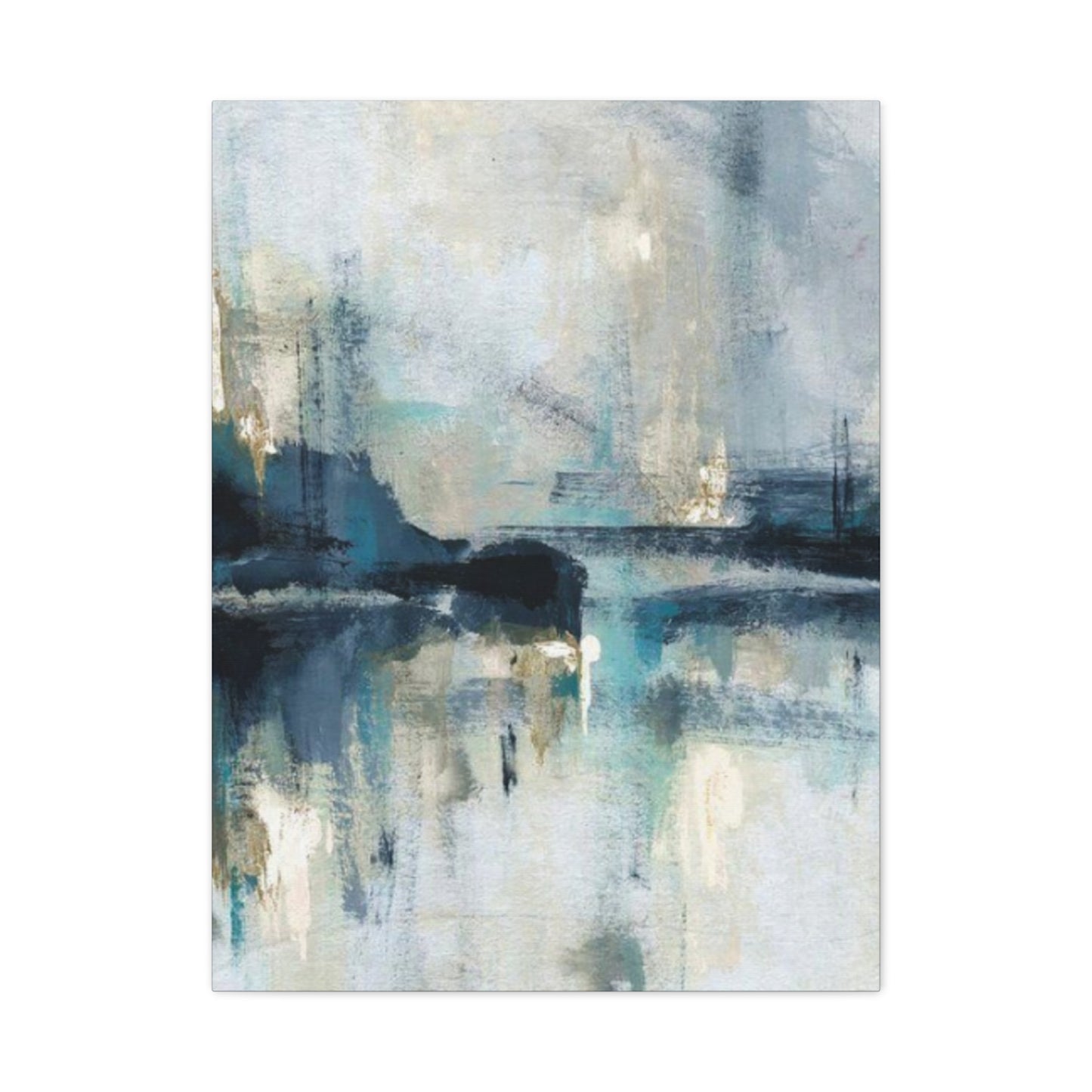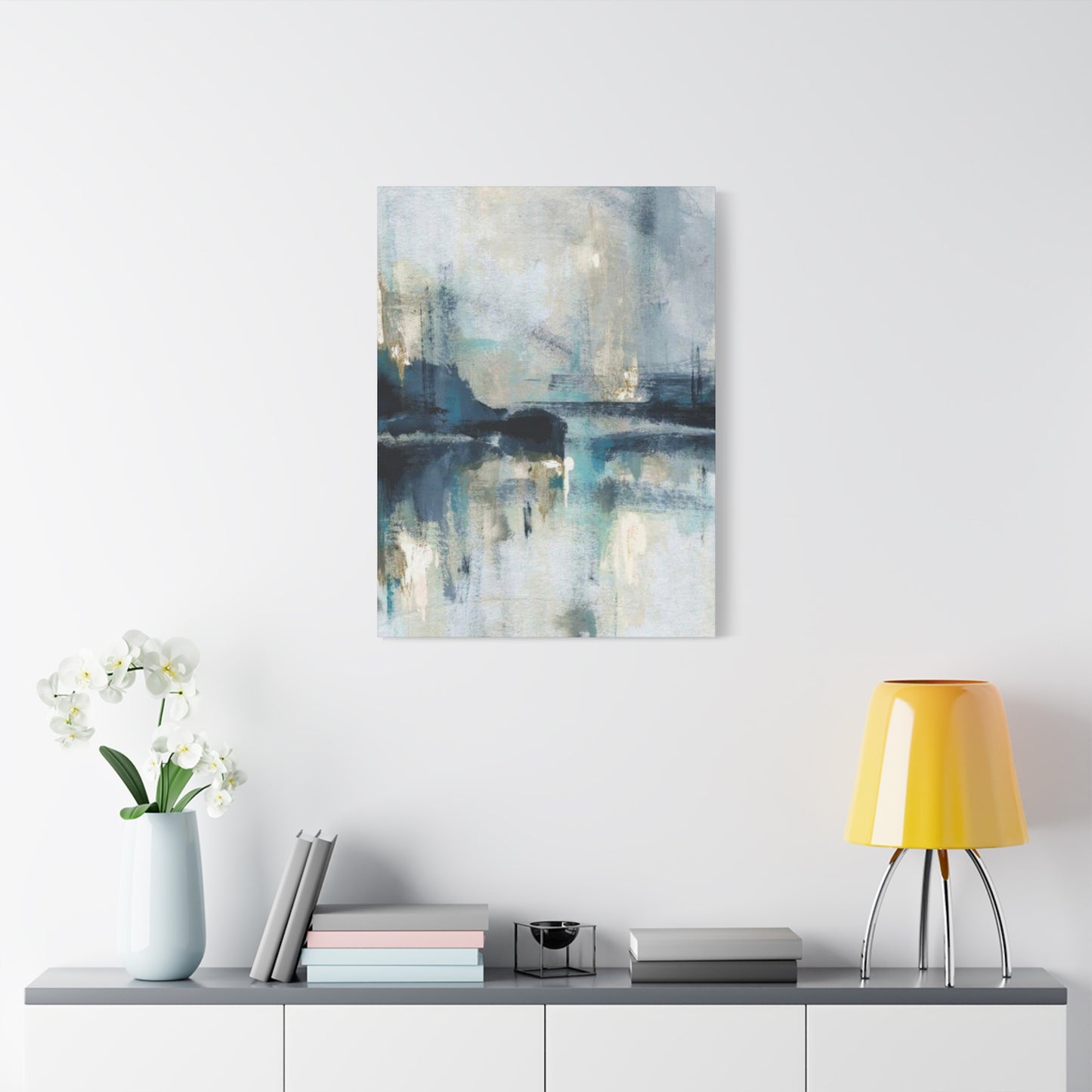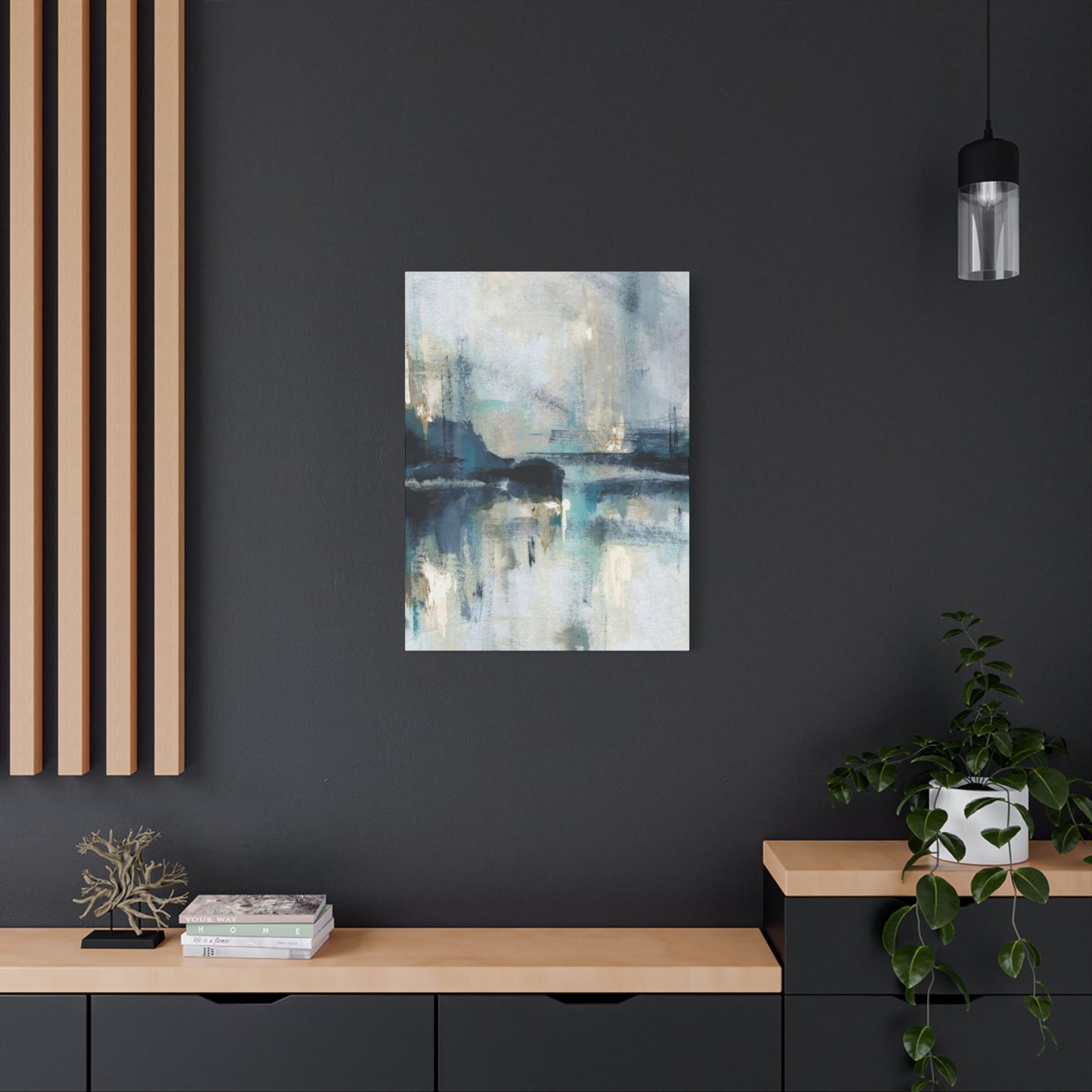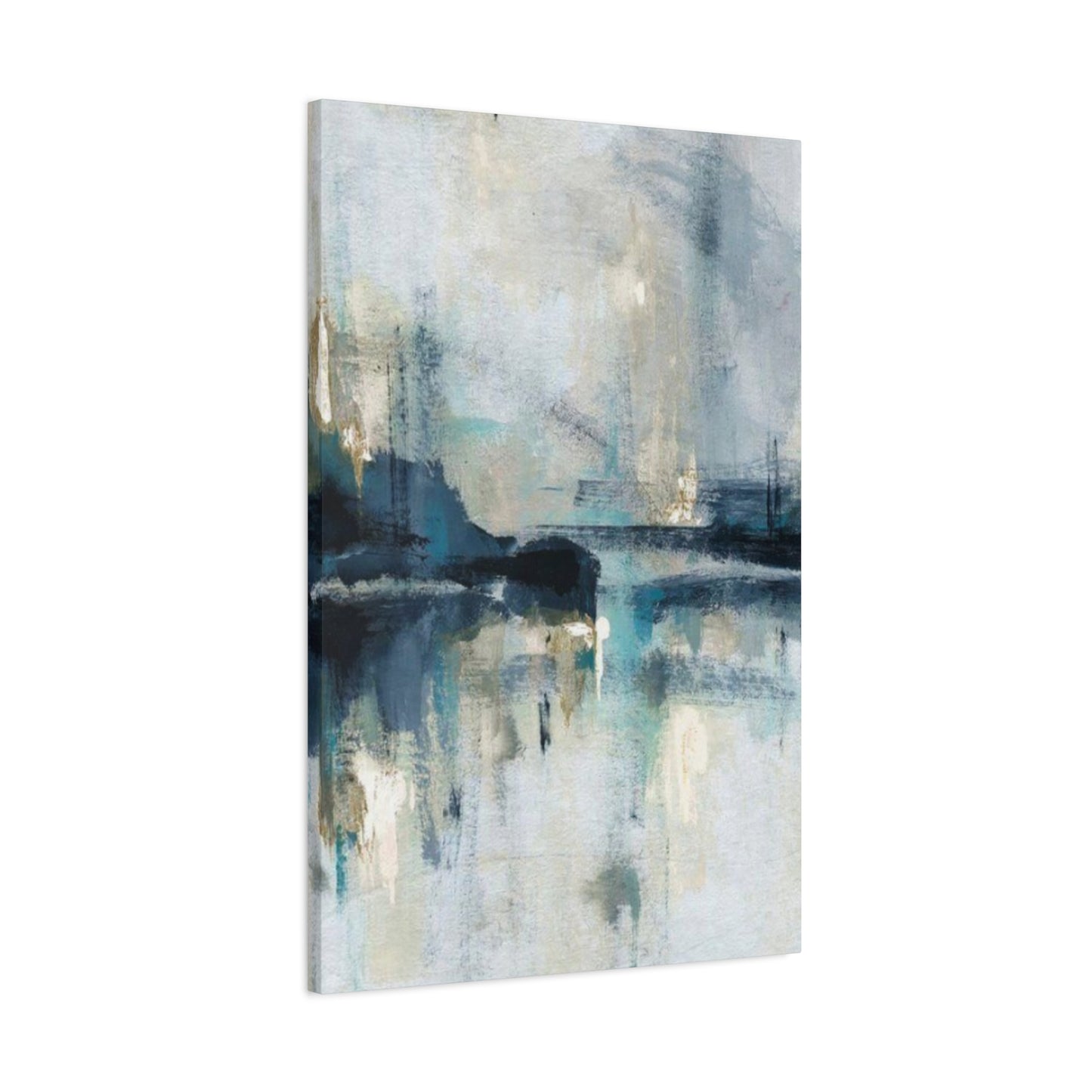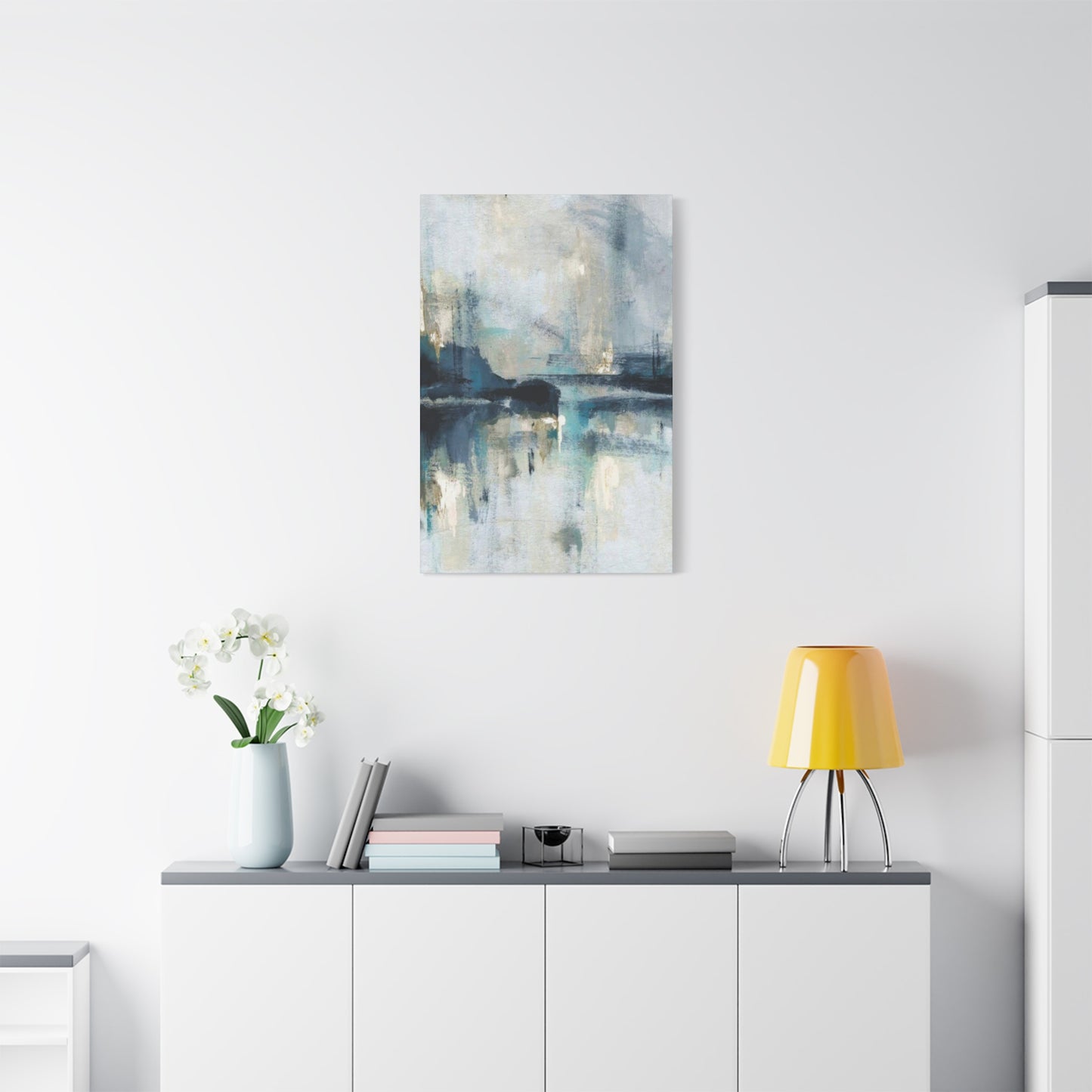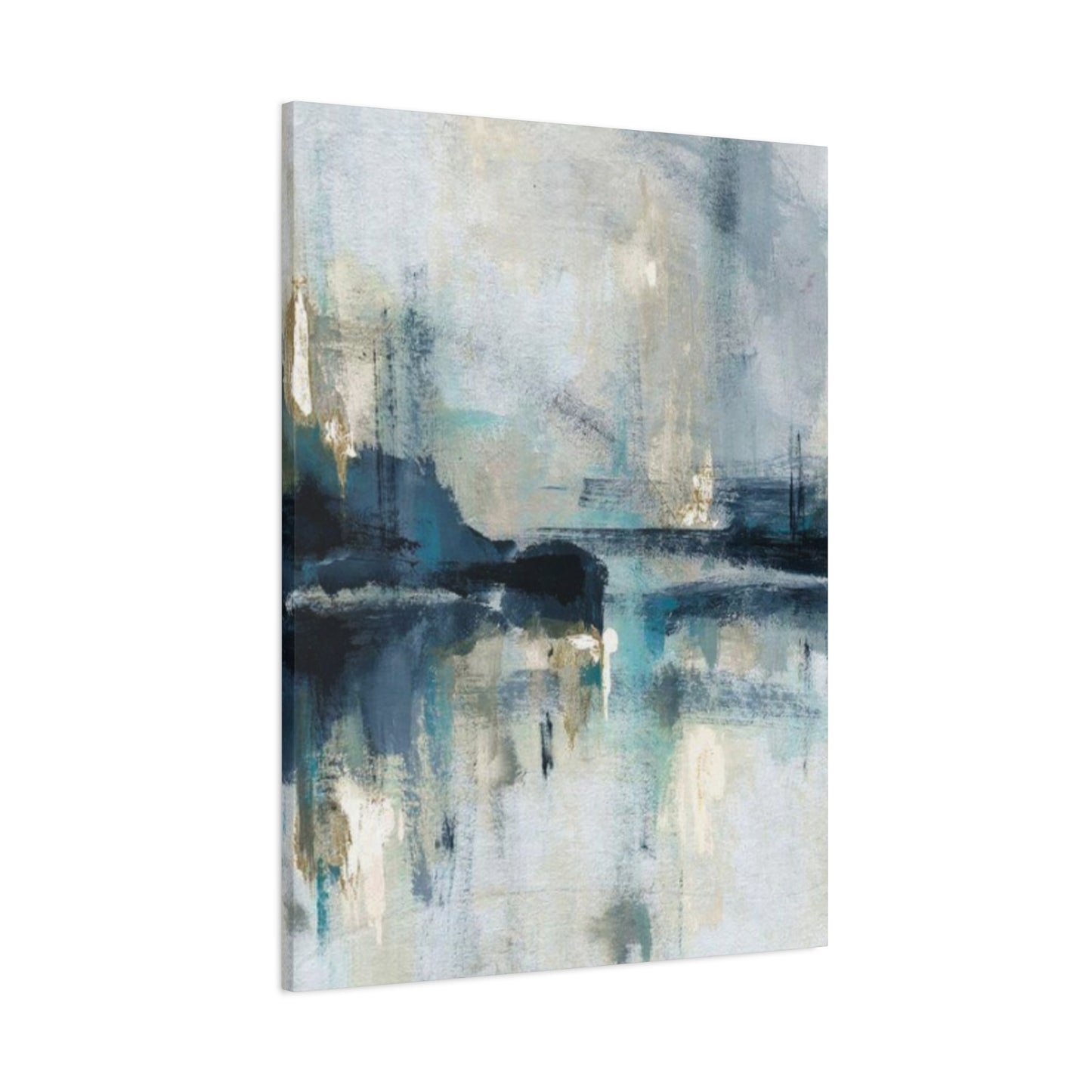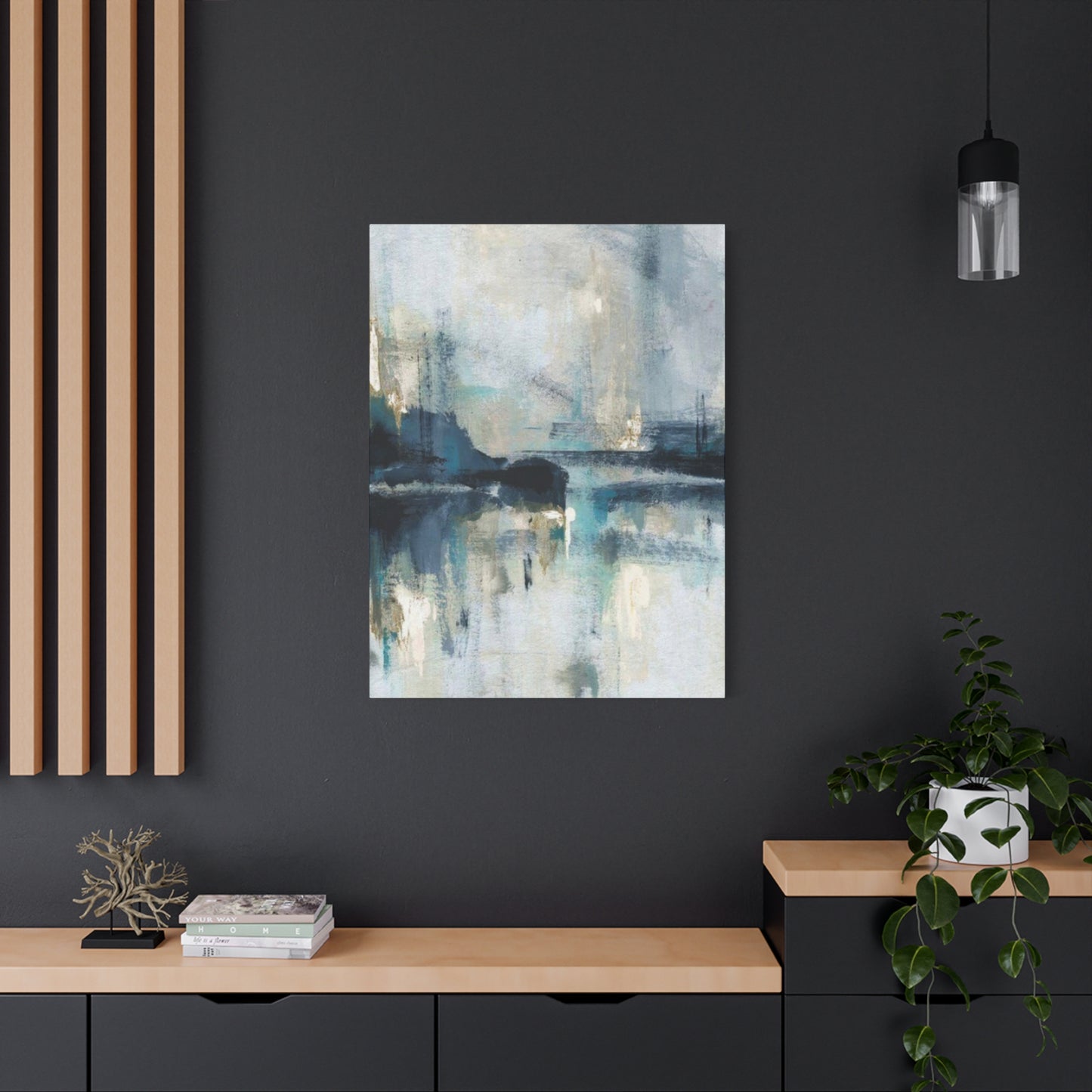Coastal Contemporary Expression Through Seaside Abstract Modernism Wall Art
The world of contemporary interior decoration has witnessed a remarkable evolution in recent years, with coastal-inspired artistic expressions gaining unprecedented popularity among homeowners, designers, and art enthusiasts alike. Seaside abstract modernism wall art represents a captivating fusion of natural marine elements with contemporary artistic techniques, creating visual masterpieces that transport viewers to serene coastal environments while maintaining sophisticated modern sensibilities. This artistic movement draws inspiration from the endless horizons of ocean landscapes, the rhythmic patterns of waves, the subtle color transitions of beach environments, and the organic textures found along shorelines. By combining these natural elements with abstract expressionism and modernist design principles, artists create pieces that resonate deeply with those who seek to bring the calming essence of the coast into their living spaces.
The appeal of coastal contemporary artwork extends far beyond simple decoration, touching upon fundamental human connections to water, nature, and tranquility. Throughout human history, coastal regions have served as sources of inspiration, contemplation, and renewal. The modern interpretation of these timeless themes through abstract artistic expression allows individuals to maintain this connection regardless of their geographical location. Whether displayed in urban apartments, suburban homes, or actual beachfront properties, these artistic creations serve as windows to the maritime world, offering daily reminders of nature's beauty and the peaceful rhythm of oceanic environments.
Contemporary artists working within this genre employ various techniques, materials, and approaches to capture the essence of seaside environments while maintaining distinctly modern aesthetic qualities. The abstraction inherent in these works allows for personal interpretation, making each viewing experience unique and deeply individual. Rather than presenting literal representations of beaches, waves, or marine life, these artworks distill the emotional and sensory experiences of coastal environments into visual compositions that speak to viewers on intuitive and emotional levels.
Compositional Approaches in Modern Marine Abstraction
The compositional strategies employed in seaside abstract modernism wall art play crucial roles in determining how viewers experience and interpret these works. Unlike traditional representational marine painting, which typically organizes compositions around recognizable elements such as boats, beaches, or seascapes, abstract modernist approaches to coastal themes employ more interpretive and expressive compositional structures that suggest rather than depict maritime environments.
Horizontal compositional elements frequently dominate seaside abstract modernism wall art, reflecting the inherently horizontal nature of coastal landscapes where sea meets sky along extended horizon lines. These horizontal divisions and movements within compositions create feelings of stability, calm, and expansiveness that psychologically align with the peaceful qualities many people seek when incorporating coastal-inspired art into their living spaces. Artists may establish strong horizontal bands of color that evoke distinct zones of beach, water, and sky, or they may employ more subtle horizontal rhythms that suggest the layered quality of coastal atmospheres without creating rigid divisions.
Vertical compositional elements provide important counterbalances to horizontal structures, creating visual tension and interest that prevents compositions from becoming monotonous or overly static. Vertical movements might suggest coastal vegetation, rainfall over water, cliff faces, or the upward thrust of waves. These vertical components add dynamism and energy to compositions while maintaining overall coastal character and helping guide viewer attention through different areas of the artwork.
Many artists working within the seaside abstract modernism genre employ asymmetrical compositional approaches that feel more organic and natural than rigidly symmetrical arrangements. Asymmetry creates visual interest and movement while avoiding the potentially artificial feeling that perfect symmetry can introduce. By carefully balancing visual weight across compositions without relying on mirror-image structures, artists create works that feel dynamic yet harmonious, active yet balanced.
The concept of negative space plays particularly important roles in coastal abstract compositions. Large areas of relatively simple, unified color can evoke the expansive qualities of ocean and sky while providing visual rest areas that prevent compositions from feeling cluttered or overwhelming. This use of negative space aligns with minimalist aesthetic principles while also reflecting the actual spatial qualities of coastal environments, where vast expanses of water and sky naturally dominate visual experience.
Layering represents another crucial compositional technique in seaside abstract modernism wall art. Artists build up multiple layers of paint, medium, or material to create depth, complexity, and visual interest that reward extended viewing. These layers might suggest the multiple strata visible in coastal environments where atmosphere, water surface, subsurface zones, and seafloor all contribute to overall visual experience. The physical depth created through layering adds tactile and dimensional qualities that enhance the sensory impact of artworks.
Gestural marks and expressive brushwork contribute significantly to the compositional character of many pieces within this genre. Rather than creating smooth, uniform surfaces, artists often employ visible brushstrokes, palette knife marks, or other application techniques that leave evidence of the creative process. These gestural elements add energy, movement, and human presence to compositions, preventing them from feeling too mechanical or impersonal while suggesting the dynamic, ever-changing nature of coastal environments.
Textural Dimensions in Coastal Visual Art
Texture constitutes one of the most engaging and distinctive aspects of seaside abstract modernism wall art, with artists employing numerous techniques to create surface variations that enhance visual interest, add dimensional complexity, and evoke the tactile qualities of coastal environments. Unlike purely smooth, flat artworks, textured pieces invite closer inspection and create changing visual experiences as lighting conditions shift throughout the day, casting shadows and highlighting raised surfaces in ways that bring compositions to life.
The physical textures incorporated into coastal abstract artwork often reference specific material qualities found in maritime settings. Artists might build up paint in ways that suggest the rough, weathered surfaces of beach rocks, the rippled patterns of sand dunes, the crusty accumulation of salt deposits, or the foamy texture of breaking waves. These textural references create subliminal connections to actual coastal experiences, allowing viewers to engage with artworks not just visually but through associations with tactile memories and sensory experiences.
Impasto techniques, which involve applying paint thickly so that brushstrokes or palette knife marks remain visible and raised above the surface, prove particularly effective in creating dramatic textural effects. Artists working with heavy impasto can build substantial three-dimensional elements within their compositions, creating areas that catch light, cast shadows, and change appearance depending on viewing angle and lighting conditions. This technique adds sculptural qualities to paintings, blurring boundaries between two-dimensional and three-dimensional art forms.
Mixed media approaches allow artists to incorporate actual materials from coastal environments or materials that suggest coastal qualities into their artworks. Sand, shells, sea glass, driftwood fragments, rope fibers, or other marine-associated materials might be embedded into compositions, creating direct physical connections to beach environments. Even when not using actual beach materials, artists often incorporate substances such as modeling paste, texture gels, or other mediums that create sand-like, stone-like, or water-like surface qualities.
Scraping, scratching, and incising techniques create linear textural elements that might suggest wave patterns, tidal marks, or the erosive effects of water and wind on coastal surfaces. By removing or displacing wet paint or underlying layers, artists create marks that reveal history and process while adding visual complexity. These techniques can produce delicate, subtle textures or bold, dramatic surface disruptions depending on the tools and pressure employed.
Glazing techniques, while not creating physical texture, produce optical textures through layering of translucent or semi-transparent color applications. Multiple thin layers of paint allow underlying colors and marks to show through, creating depth and luminosity reminiscent of the way light penetrates water or atmospheric moisture. This optical layering creates richness and complexity that rewards sustained viewing, revealing subtle color variations and relationships that might not be immediately apparent.
Dripping, pouring, and flowing techniques allow gravity and fluid dynamics to contribute to textural outcomes, creating organic patterns and accumulations that reference the movement of water in coastal environments. As paint flows across surfaces, pools in low areas, or drips down vertical planes, it creates unpredictable but visually compelling effects that add spontaneity and natural character to compositions. These techniques align with process-oriented approaches to art-making that embrace chance and natural forces as creative partners.
Material Selection for Contemporary Coastal Creations
The materials artists choose when creating seaside abstract modernism wall art significantly impact both the aesthetic qualities and practical characteristics of finished works. Contemporary artists have access to an unprecedented range of materials, from traditional media refined over centuries to innovative products developed specifically for modern art-making. Understanding material properties and selecting appropriate options for specific artistic goals represents a crucial aspect of successful coastal abstract art creation.
Acrylic paints have become enormously popular among contemporary artists creating coastal abstract works, offering numerous advantages including quick drying times, excellent color stability, water-based convenience, and tremendous versatility. Acrylics can be applied thickly for impasto effects, thinned to watercolor-like transparency for glazing techniques, or mixed with various mediums to alter their working properties and surface characteristics. The quick drying time of acrylics allows artists to build multiple layers rapidly, creating complex compositions without extended waiting periods between applications.
Oil paints, the traditional medium for much of Western art history, continue to find favor among many contemporary artists working in coastal abstract styles. Oils offer unmatched richness and depth of color, extended working times that allow for sophisticated blending and manipulation, and distinctive surface qualities that many artists and collectors prize. The slower drying time of oils permits extended periods of adjustment and refinement, allowing artists to work wet-into-wet for extended sessions to achieve subtle color transitions and smooth blending.
Watercolor and gouache, while perhaps less commonly associated with large-scale abstract work, offer unique qualities that some artists exploit for coastal-themed pieces. The transparent, flowing nature of watercolor naturally suggests aquatic qualities, while the medium's tendency toward soft edges and subtle color gradations aligns well with atmospheric coastal themes. Gouache, an opaque water-based medium, provides stronger color and greater covering power while maintaining some of the flowing, spontaneous qualities of watercolor.
Mixed media approaches combining multiple material types allow artists maximum flexibility and creative possibility. A single work might incorporate acrylic paint, ink, charcoal, pastel, collage elements, and textural additives, with each material contributing distinct visual and tactile qualities. This approach aligns with postmodern sensibilities that embrace hybrid forms and reject rigid categorical boundaries between artistic media.
The supports upon which artists create their work also significantly impact final results. Canvas remains the most traditional and popular support for coastal abstract paintings, offering appropriate texture, flexibility, and archival stability. However, contemporary artists also work on wood panels, which provide perfectly smooth, rigid surfaces ideal for certain techniques; paper, which offers unique absorbency and texture; metal, which creates striking industrial or contemporary aesthetics; and various other materials chosen for specific visual or conceptual properties.
Stylistic Variations Within Coastal Abstract Expression
Seaside abstract modernism wall art encompasses a broad spectrum of stylistic approaches, with individual artists developing distinctive visual languages within the general framework of coastal-inspired abstract expression. These stylistic variations reflect different artistic priorities, aesthetic preferences, technical capabilities, and conceptual interests, creating rich diversity within the genre and offering options that appeal to varied collector tastes and interior design requirements.
Gestural abstraction represents one prominent stylistic approach, characterized by energetic, expressive brushwork that emphasizes the physical act of painting and the artist's bodily movement. Artists working in gestural styles create dynamic compositions through sweeping strokes, splattered paint, dripped lines, and other marks that record physical action and creative spontaneity. When applied to coastal themes, gestural approaches capture the energy and movement of wind, waves, and changing weather conditions, creating artworks that feel active and alive.
Geometric abstraction offers a contrasting approach, employing structured forms, clean edges, and carefully planned compositions rather than spontaneous gesture. Artists working geometrically might create coastal abstractions using horizontal bands suggesting beach, sea, and sky stratification, or employ rectangular, circular, or other geometric forms to create stylized, organized interpretations of maritime environments. This approach appeals to viewers preferring more ordered, controlled aesthetic sensibilities while still conveying coastal themes through color, composition, and conceptual framework.
Color field approaches emphasize large areas of relatively uniform color as the primary compositional element, minimizing or eliminating busy details, complex marks, or dramatic textural variations. In coastal color field works, vast expanses of blue might suggest ocean or sky, with subtle color shifts providing the primary source of visual interest and movement. This contemplative, meditative stylistic approach aligns well with desires for peaceful, calming art that encourages quiet reflection rather than active visual engagement.
Lyrical abstraction combines elements of gestural freedom with more careful attention to aesthetic harmony and visual beauty than pure action painting. Artists working lyrically create flowing, organic compositions that feel spontaneous yet refined, energetic yet graceful. This balanced approach proves particularly effective for coastal themes, allowing representation of water's fluid movement and atmospheric effects while maintaining sophisticated aesthetic control and visual coherence.
Hard-edge abstraction employs crisp, precisely defined boundaries between color areas, creating graphic, bold compositions with strong visual impact. Applied to coastal themes, hard-edge approaches might create stylized interpretations of horizon lines, surf patterns, or beach striations using sharp color transitions and geometric organization. This style appeals to contemporary sensibilities favoring clean, modern aesthetics and works particularly well in minimalist or contemporary interior environments.
Scale Considerations in Coastal Wall Art
The physical dimensions of seaside abstract modernism wall art significantly impact how these works function within interior spaces and how viewers experience them. Artists create coastal abstracts in scales ranging from intimate small pieces suitable for personal spaces to monumental works designed for grand architectural settings, with each size category offering distinct advantages and creating different types of viewer engagement.
Large-scale coastal abstract works, often measuring five feet or more in one or both dimensions, create powerful, immersive visual experiences that can dominate interior spaces and establish overall atmospheric character for rooms. These substantial pieces naturally draw attention and serve as focal points around which other design elements organize. The scale itself suggests the vastness of oceanic environments, allowing viewers to feel enveloped by the artwork in ways that more closely approximate actual coastal experiences. Large works also permit artists to work with grand gestures and bold compositional moves that would lose impact at smaller scales.
The creation of large-scale pieces requires artists to work differently than when producing smaller works, often necessitating full-body movement and engagement rather than primarily hand and arm gestures. This physical involvement can result in more energetic, dynamic compositions that convey greater sense of movement and spontaneity. Additionally, large works allow incorporation of more complex layering, subtle detail variations, and textural nuances that reward close inspection while still reading coherently from distance.
Medium-sized works, typically ranging from two to four feet in primary dimensions, offer versatility that makes them popular among both artists and collectors. These pieces create meaningful visual impact without overwhelming moderate-sized residential rooms, making them practical choices for typical home environments. Medium-scale works prove particularly effective in establishing design themes or color schemes within spaces while still allowing other design elements to contribute meaningfully to overall interior character.
Artists working at medium scale can employ most techniques available at larger scales while maintaining more manageable studio requirements and creation processes. These pieces remain portable and relatively easy to transport, install, and store compared to truly large works, practical considerations that matter to both artists and collectors. The pricing structure for medium-sized original artworks also tends to fall within ranges more accessible to broader collector markets than monumental pieces.
Small-scale coastal abstracts, generally under two feet in primary dimensions, offer intimacy and accessibility that larger works cannot provide. These pieces invite close viewing and detailed inspection, creating personal, contemplative viewing experiences. Small works prove ideal for displaying in multiples, allowing collectors to create gallery walls or arrangements that combine several pieces into larger compositional groupings while maintaining individual identity for each artwork.
The reduced scale allows artists to work with precision and detail that might prove impractical at larger sizes, while also making the creative process more accessible in terms of studio space, material consumption, and time investment. Small works also provide entry points for emerging collectors or those with limited budgets who wish to begin acquiring original art. Despite their modest dimensions, well-executed small pieces can create powerful aesthetic impacts and demonstrate the same technical sophistication and creative vision as larger works.
Series formats allow artists to explore how multiple pieces interact across various scales and configurations. A series might include several pieces of identical dimensions designed for installation as a unified grouping, or might combine works of different sizes arranged to create dynamic, asymmetrical compositions. Diptychs, triptychs, and polyptychs divide single compositions across multiple panels, creating segmented works that can be displayed together or separately depending on collector preferences and spatial requirements.
Lighting Strategies for Showcasing Marine Art
Proper lighting represents one of the most crucial yet frequently overlooked aspects of successfully displaying seaside abstract modernism wall art. The way light interacts with artwork surfaces dramatically affects color appearance, textural visibility, and overall visual impact. Understanding lighting principles and implementing appropriate illumination strategies ensures that coastal abstract pieces display at their best and create intended atmospheric effects within interior environments.
Natural daylight offers unique qualities that no artificial light source can perfectly replicate, including full-spectrum color rendering and constantly shifting intensity and color temperature throughout the day. Positioning seaside abstract modernism wall art where it receives indirect natural light allows the artwork to change appearance throughout daily cycles, appearing different in morning light than afternoon or evening illumination. This changing quality creates living, dynamic relationships between artworks and their environments, with the pieces revealing different aspects depending on time and light conditions.
However, direct sunlight presents serious conservation concerns, as ultraviolet radiation causes fading, discoloration, and degradation of many art materials over time. Even archival, lightfast materials will eventually suffer damage from prolonged sun exposure. Therefore, when utilizing natural light, positioning artwork to receive indirect or filtered daylight proves preferable to direct sun exposure. Window treatments such as UV-filtering films, sheer curtains, or adjustable blinds allow control over light quality and intensity while protecting valuable artworks.
Artificial lighting systems offer consistent, controllable illumination that ensures optimal artwork display regardless of time of day or natural light availability. Several artificial lighting technologies prove suitable for illuminating coastal abstract art, each with distinct characteristics and advantages. LED technology has emerged as the preferred option for most contemporary art lighting applications, offering excellent color rendering, minimal heat generation, long operational life, and energy efficiency. Modern LED systems designed specifically for art lighting provide adjustable color temperature and intensity, allowing precise customization of lighting effects.
Interior Design Integration of Coastal Artwork
Successfully incorporating seaside abstract modernism wall art into interior environments requires thoughtful consideration of relationships between artworks and surrounding design elements. When properly integrated, coastal abstract pieces enhance and complete interior designs, establishing atmospheric character, introducing color themes, and creating visual focal points that organize spatial perception and guide viewer attention.
Color coordination represents one of the most direct ways artwork connects to surrounding interior design. Coastal abstract pieces can either harmonize with existing color schemes, reinforcing established palette choices, or introduce contrasting colors that energize spaces and prevent monotonous color uniformity. When harmonizing, artwork colors might echo or closely relate to wall colors, upholstery fabrics, area rugs, or other significant interior elements, creating unified, cohesive environments where all components support common aesthetic themes.
Alternatively, strategic color contrast allows artwork to pop visually and serve as dramatic focal points that command attention. A vibrant coastal abstract featuring intense turquoise and coral tones will create striking visual impact when displayed against neutral gray or white walls, immediately drawing viewer attention and establishing the piece as a central design element. This approach proves particularly effective when featuring exceptional artworks worthy of prominent display and careful attention.
Furniture arrangements should consider and respond to artwork placement, with seating groups, tables, and other furnishings positioned to support comfortable artwork viewing. Major pieces often hang above sofas, credenzas, or other substantial furniture items, creating compositional relationships between three-dimensional furnishings and two-dimensional art. The visual weight, scale, and character of furniture should complement rather than compete with associated artworks, with furniture selections supporting overall aesthetic themes established by coastal abstract pieces.
Architectural features significantly impact effective artwork display, with ceiling heights, wall expanses, moldings, built-ins, and other structural elements establishing parameters within which art display decisions occur. High ceilings accommodate large-scale pieces and permit dramatic vertical displays, while standard ceiling heights typically work better with horizontally oriented works. Architectural details such as crown moldings, wainscoting, or fireplace mantels create natural boundaries and reference points that inform appropriate artwork sizing and positioning.
The overall design style of interior spaces should guide artwork selection, with coastal abstract pieces chosen to complement contemporary, transitional, traditional, or other design aesthetics. Contemporary spaces with clean lines and minimal decoration naturally accommodate bold, graphic coastal abstracts, while transitional spaces might benefit from softer, more lyrical pieces that bridge traditional and modern sensibilities. Even in traditionally styled interiors, carefully selected coastal abstracts can introduce refreshing contemporary notes without creating jarring stylistic conflicts.
Practical Acquisition Strategies for Coastal Wall Art
Successfully acquiring seaside abstract modernism wall art that meets aesthetic preferences, quality standards, and budget parameters requires understanding available acquisition channels, evaluation criteria, and market dynamics. Whether purchasing emerging artist work or established contemporary pieces, informed collectors make better decisions and derive greater satisfaction from their acquisitions.
Original artworks represent the most prestigious acquisition option, offering unique, one-of-a-kind pieces created directly by artists. Original paintings, drawings, and mixed media works carry inherent value through their uniqueness and direct connection to creative makers. Collectors choosing originals invest in authentic artistic expressions while supporting working artists. Original acquisition prices vary enormously based on artist reputation, artwork size, medium complexity, and market demand, with emerging artist pieces potentially available for hundreds of dollars while established contemporary artist works command thousands or tens of thousands.
Limited edition prints provide accessibility to recognizable artist imagery at lower price points than original works. These reproductions, produced in restricted quantities and typically signed and numbered by artists, maintain collectible status while offering broader affordability. Various print techniques including giclée printing, serigraphs, and lithographs produce different visual qualities and exist at different price levels. Quality limited editions employ archival materials and professional production techniques ensuring longevity comparable to original works.
Open edition reproductions offer maximum affordability and accessibility, with unlimited production runs of popular images making coastal abstract art available at entry-level prices. While lacking the exclusivity and investment potential of originals or limited editions, high-quality reproductions allow anyone to enjoy beautiful imagery regardless of budget constraints. Modern digital printing technologies produce remarkably accurate color and detail rendering, creating affordable decorative solutions suitable for many residential and commercial applications.
Gallery purchases provide traditional acquisition routes connecting collectors with artists and artworks. Galleries curate selections of artists and works, offering expert guidance and established reputation backing. Gallery environments allow in-person artwork viewing under proper lighting conditions, supporting informed purchasing decisions. Galleries typically handle framing, delivery, installation, and documentation, providing comprehensive services justifying their commission percentages. Relationships with gallery personnel can provide ongoing access to new works, artist insights, and market information.
Art fairs bring together multiple galleries and artists in temporary exhibition venues, allowing collectors to view diverse works from numerous sources in concentrated timeframes. These events create opportunities for comparative evaluation, discovery of new artists, and direct artist interactions. Fair attendance provides education about current market trends, pricing structures, and emerging aesthetic directions within coastal abstract genres.
Online marketplaces have revolutionized art acquisition, providing unprecedented access to global artist networks and diverse artwork selections. Digital platforms allow browsing thousands of pieces from home, filtering by style, color, size, and price parameters. While online viewing cannot perfectly replicate in-person experience, high-quality photography and detailed descriptions enable informed preliminary evaluations. Many platforms offer return policies and authenticity guarantees protecting buyer interests.
Direct artist purchases eliminate intermediary commissions, potentially offering better value while ensuring maximum financial support reaches creators. Many artists maintain websites or social media presences showcasing available works and accepting direct commissions. This approach allows personal relationships with artists, deeper understanding of creative processes, and opportunities for commissioned pieces tailored to specific requirements. Direct engagement requires more buyer initiative than gallery relationships but can prove extremely rewarding.
Studio visits provide intimate access to artists' working environments, available inventory, and creative processes. Seeing where and how artists work offers insights impossible to gain through finished piece viewing alone. Studio visits allow extended conversations about artistic philosophies, technical approaches, and specific work histories. Many artists welcome studio visitors by appointment, particularly when genuine collecting interest exists.
Auction houses offer opportunities to acquire both contemporary pieces and secondary market works previously owned by other collectors. Auction formats can yield advantageous pricing when competition remains limited, though popular pieces may exceed estimates when multiple bidders compete. Auction participation requires understanding bidding procedures, buyer premiums, and authentication processes. Major auction houses provide detailed condition reports and provenance documentation for significant lots.
Preservation and Maintenance of Coastal Abstract Pieces
Proper care and maintenance of seaside abstract modernism wall art ensures these valuable pieces retain their intended appearance and remain stable for decades or generations. Understanding appropriate handling, environmental conditions, cleaning methods, and conservation practices allows collectors to protect investments while enjoying displayed artworks without excessive concern about damage or deterioration.
Environmental stability represents the most fundamental preservation consideration, with stable temperature and humidity preventing material stress and deterioration. Dramatic fluctuations in either parameter can cause expansion and contraction cycles stressing paint layers, supports, and adhesive bonds. Ideal conditions maintain temperatures between 65-75 degrees Fahrenheit and relative humidity between 40-55 percent. While most residential environments cannot maintain museum-level environmental controls, avoiding extreme conditions and rapid fluctuations provides adequate protection for most artworks.
Light exposure requires careful management, as cumulative light damage represents one of the most significant long-term threats to artwork preservation. Both visible light and ultraviolet radiation cause fading, color shifts, and material degradation over time. While some damage reversal may be possible through professional conservation treatment, prevention remains far preferable to remediation. Limiting light exposure through thoughtful artwork positioning, appropriate artificial lighting levels, and UV-filtering glazing or window treatments protects valuable pieces.
Physical handling should occur minimally and carefully, with clean, dry hands or cotton gloves preventing oil and dirt transfer to artwork surfaces. When moving framed pieces, carrying by frame edges rather than hanging wire prevents stress on mounting hardware. Unframed canvas works should be handled by stretcher bars rather than painted surfaces. Professional art handlers should be engaged for valuable or large pieces requiring transportation or installation.
Cleaning methods must remain gentle and conservative, as aggressive cleaning can cause irreversible damage. For framed works behind glass, standard glass cleaning products applied to cloths rather than directly to glass surfaces prevent liquid seepage behind glazing. For unprotected painted surfaces, gentle dusting with soft, clean brushes removes loose dirt without abrading or scratching paint. Any cleaning beyond simple dusting should be undertaken only by professional conservators, as inappropriate cleaning products or techniques can cause catastrophic damage.
Storage conditions for artworks not currently displayed should provide protection from physical damage, environmental extremes, and pest infestation. Vertical storage in climate-controlled spaces prevents warping while minimizing required space. Works should be separated by acid-free materials preventing surface contact and chemical transfer. Storage areas should be clean, dry, and regularly inspected for pest activity, water infiltration, or other potential problems.
Pest prevention protects artworks from insect damage, rodent activity, and mold growth. Regular inspection allows early detection of any pest problems before significant damage occurs. Appropriate humidity control prevents mold growth while making environments less hospitable to various insects. Professional pest management consultation provides guidance for serious infestations without using methods that might damage artworks.
Professional conservation treatment becomes necessary when damage occurs or condition deteriorates beyond what simple maintenance can address. Trained conservators possess specialized knowledge, materials, and techniques for stabilizing and treating damaged artworks. Conservation may include cleaning, consolidation of flaking paint, tear repair, stretcher replacement, or other interventions. Ethical conservation practice maintains artwork integrity while remaining reversible whenever possible.
Insurance coverage provides financial protection against loss, theft, or damage. Homeowner policies typically include some artwork coverage, though valuable pieces may require additional scheduling with specific item documentation and appraisal. Specialized art insurance policies offer comprehensive coverage specifically designed for art collectors. Professional appraisals by qualified appraisers establish documented values supporting appropriate insurance coverage and potential tax deductions for charitable donations.
Documentation through photography creates permanent records of artwork condition and appearance. Detailed photographs taken upon acquisition provide baseline references for monitoring condition changes over time. Regular condition documentation supports insurance claims and conservation planning. Digital files should be backed up in multiple locations ensuring permanent record preservation regardless of physical artwork fate.
Commission Process for Custom Coastal Artwork
Commissioning custom seaside abstract modernism wall art allows collectors to obtain pieces specifically tailored to their aesthetic preferences, spatial requirements, and color needs. The commission process creates collaborative relationships between artists and clients, resulting in unique works perfectly suited to particular settings while providing artists with creative challenges and income security.
Initial conceptualization begins with clear communication about desired outcomes including size requirements, color preferences, stylistic approaches, and thematic elements. Providing artists with information about intended display locations, existing décor elements, and inspiration sources helps ensure resulting artworks align with expectations. Some clients provide detailed specifications while others prefer allowing artists substantial creative freedom within general parameters. Finding appropriate balance between direction and artistic autonomy influences both process satisfaction and outcome quality.
Artist selection requires research to identify creators whose existing body of work demonstrates capabilities and aesthetic sensibilities aligned with commission goals. Reviewing portfolios, understanding artistic approaches, and examining technical execution in previous works indicates whether artists can successfully realize envisioned pieces. Initial conversations assess communication compatibility and mutual understanding before formal commission agreements.
Budget discussion should occur early in commission processes, establishing realistic expectations about what proposed investments can achieve. Commission pricing typically reflects artwork size, medium complexity, artist experience level, and anticipated completion timeline. Clients should understand that quality custom artwork requires appropriate compensation for artist time, materials, and expertise. Attempting to minimize costs often results in disappointment when budget limitations prevent execution of desired concepts.
Formal agreements document commission terms including size specifications, general aesthetic parameters, agreed price, payment schedule, completion timeline, and ownership transfer terms. Clear contracts prevent misunderstandings and provide recourse should disputes arise. Professional artists typically provide standard commission agreements covering essential terms, though clients may request modifications addressing specific concerns or requirements.
Design development may include preliminary sketches, color studies, or small maquettes allowing clients to preview proposed directions before artists commit to final large-scale execution. This development phase provides opportunities for feedback and refinement ensuring alignment between artist vision and client expectations. Some artists prefer working intuitively without extensive preliminary planning, requiring clients to trust creative processes based on previous work quality.
Creation timelines vary based on artwork scale, medium, and artist scheduling. Complex, large-scale pieces may require several weeks or months for completion, while smaller works might be finished within days. Understanding realistic timelines prevents unreasonable expectations and allows planning around specific deadlines when necessary. Rush timelines may incur additional fees compensating artists for schedule disruptions.
Progress communication during creation keeps clients informed and engaged without excessive artist interruption. Some artists provide periodic photo updates documenting work evolution, while others prefer maintaining privacy until completion. Establishing mutually agreeable communication protocols balances client interest with artist need for uninterrupted creative focus.
Revision policies address how changes are handled once initial work begins. Most commission agreements include limited revision rounds within original pricing, with additional changes incurring supplemental fees. Understanding that excessive revision requests can compromise artistic vision and significantly extend timelines encourages thoughtful, consolidated feedback rather than ongoing incremental changes.
Completion inspection allows clients to evaluate finished works before formal acceptance and final payment. This inspection should occur under appropriate lighting conditions allowing accurate color and detail assessment. Most professional commission arrangements include provisions for reasonable concerns about execution quality or specification adherence, though subjective preference changes typically do not constitute grounds for rejection.
Installation services may be provided by artists or arranged independently, depending on artwork size and complexity. Professional installation ensures proper mounting hardware, secure attachment, and optimal positioning. For valuable commissions, professional installation provides peace of mind and may be required to maintain warranty coverage.
Ongoing relationships between artists and commissioning clients often develop from successful initial projects, leading to multiple commissions over time. These relationships benefit both parties through established trust, communication efficiency, and mutual understanding of preferences and capabilities. Many serious collectors build long-term connections with several artists whose work consistently appeals.
Cultural Significance of Ocean-Inspired Artistic Expression
The enduring cultural significance of ocean-inspired artistic expression, including contemporary seaside abstract modernism wall art, reflects deep human relationships with maritime environments that transcend individual aesthetic preferences to touch upon fundamental aspects of human experience, psychology, and cultural development. Understanding these broader cultural contexts enriches appreciation for individual artworks while revealing how contemporary coastal abstraction connects to longstanding artistic traditions.
Historical relationships between human societies and ocean environments have profoundly shaped cultural development, economic systems, mythology, spiritual beliefs, and collective imagination. Coastal regions have supported human habitation for millennia, providing food resources, transportation routes, trade opportunities, and connections between distant lands. These practical relationships with maritime environments generated cultural meanings extending far beyond utilitarian considerations to encompass spiritual, philosophical, and aesthetic dimensions.
Mythological and religious traditions across numerous cultures incorporate ocean imagery and marine deities reflecting the sea's mysterious, powerful, and life-giving qualities. Ancient Greek mythology included Poseidon ruling oceanic realms, while numerous other cultures developed their own marine-related spiritual traditions. The ocean's vastness, depth, and power inspired awe and reverence, positioning it as a source of both sustenance and danger requiring respect and appropriate propitiation.
Literary traditions extensively incorporate ocean settings and maritime metaphors conveying themes of journey, transformation, danger, and discovery. From ancient epics to contemporary novels, the sea serves as powerful symbolic territory representing the unknown, the unconscious mind, emotional depths, and transformative experiences. This rich literary heritage provides cultural context informing how contemporary viewers interpret ocean-inspired visual art.
The Romantic movement of the late eighteenth and early nineteenth centuries elevated nature, including dramatic seascapes, to central positions within artistic and philosophical thought. Romantic artists and writers celebrated the sublime power of natural forces, finding in ocean storms and dramatic coastal scenes opportunities to explore human relationships with nature's overwhelming magnificence. This Romantic heritage continues influencing contemporary approaches to coastal themes, even within abstract frameworks that diverge from Romantic representational strategies.
Impressionist and Post-Impressionist movements marked crucial developments in artistic approaches to coastal subjects, with artists like Claude Monet creating series paintings examining how changing light conditions transformed perception of maritime scenes. These investigations into visual perception, atmospheric effects, and subjective experience laid groundwork for subsequent abstract approaches to coastal themes. The Impressionist emphasis on personal visual experience over objective documentation opened possibilities for increasingly abstract interpretation.
The twentieth-century development of abstract art movements created revolutionary possibilities for representing coastal experiences without relying on representational imagery. Abstract Expressionists demonstrated that essential qualities of subjects could be conveyed through color, gesture, and composition without depicting recognizable forms. This liberation from representation allowed artists to access emotional and experiential dimensions of coastal encounters that realistic depiction might struggle to capture.
Contemporary environmental consciousness adds new cultural dimensions to ocean-inspired artwork, with growing awareness of marine ecosystem fragility and climate change impacts on coastal regions. Some contemporary artists working with coastal themes incorporate environmental advocacy into their practices, using artwork to raise awareness about ocean conservation needs. Even when not explicitly environmental, coastal artwork can remind viewers of nature's value and importance in an increasingly urbanized world.
Global cultural exchange facilitated by international travel, digital communication, and art market globalization means contemporary coastal abstract art draws from diverse cultural traditions rather than singular regional approaches. Artists worldwide contribute to ongoing conversations about representing maritime experiences, bringing varied cultural perspectives, aesthetic traditions, and conceptual frameworks to the genre.
The popularity of coastal themes in contemporary residential decoration reflects broader cultural patterns including urbanization creating distance from natural environments, vacation culture associating beaches with relaxation and escape, and lifestyle marketing positioning coastal aesthetics as aspirational lifestyle choices. Understanding these cultural dynamics provides context for the commercial success of seaside abstract modernism wall art while not diminishing genuine artistic merit of individual works.
Exhibition and Display Contexts for Marine Abstractions
The contexts in which seaside abstract modernism wall art appears significantly influence how audiences encounter and interpret these works. Understanding various exhibition and display settings reveals the versatility of coastal abstract art while demonstrating how presentation contexts shape viewer experience and artwork meaning.
Residential display represents the most common context for coastal abstract art, with homeowners incorporating these pieces into living rooms, bedrooms, dining areas, and other domestic spaces. In residential settings, artworks function as both aesthetic enhancements and personal expressions of inhabitant taste and values. The intimate, everyday nature of home display creates sustained, repeated viewing relationships unavailable in more formal exhibition contexts. Artworks become integrated into daily life, their presence shaping domestic atmospheres and providing ongoing aesthetic satisfaction.
Gallery exhibitions provide formal presentation contexts emphasizing serious artistic consideration and contemplative viewing. White cube gallery aesthetics, featuring minimal distraction and controlled lighting, focus attention on artworks themselves rather than surrounding contexts. This presentation format supports critical examination and aesthetic appreciation while positioning works within fine art traditions and commercial art markets. Gallery exhibitions typically include artist statements, exhibition essays, and other contextual information supporting informed interpretation.
Art fair presentations compress multiple galleries or artists into temporary exhibition venues, creating dense, stimulating environments where numerous works compete for attention. This context rewards visually striking pieces with immediate impact that can capture viewer attention despite surrounding visual competition. Art fair display requires artists and galleries to present work effectively within limited space while differentiating their offerings from numerous other exhibitors. The commercial nature of art fairs emphasizes sale transactions while still maintaining appreciation for artistic quality.
Museum exhibitions position coastal abstract works within broader art historical or thematic contexts, often combining historical and contemporary pieces to trace artistic developments or explore conceptual themes. Museum presentation carries institutional authority and cultural prestige, validating exhibited works as significant cultural contributions. The educational mission of museums typically results in extensive interpretive materials providing historical context, artistic analysis, and thematic exploration.
Corporate environments frequently incorporate coastal abstract art into offices, lobbies, conference rooms, and other professional spaces. These installations must balance aesthetic appeal with appropriateness for business contexts, typically favoring sophisticated, professional appearances over more challenging or experimental approaches. Corporate art serves multiple functions including brand expression, client impression management, and employee environmental quality enhancement.
Conclusion
Seaside abstract modernism wall art represents a compelling synthesis of contemporary artistic expression and timeless human connection to maritime environments, offering sophisticated aesthetic experiences that enrich living spaces while providing emotional and psychological benefits extending far beyond simple decoration. This artistic genre draws upon rich historical traditions while embracing innovative contemporary approaches, creating works that feel simultaneously rooted in art history and distinctly modern in character. The enduring appeal of coastal themes reflects fundamental human relationships with water, nature, and the peaceful, contemplative qualities associated with beach environments.
Throughout this exploration of seaside abstract modernism wall art, we have examined the multifaceted dimensions that contribute to the creation, understanding, and appreciation of these compelling artworks. From the historical development of marine-inspired artistic movements through psychological impacts of coastal imagery, compositional strategies, material considerations, and regional variations in aesthetic interpretation, each aspect reveals the depth and complexity underlying what might initially appear as straightforward decorative objects. These artworks embody sophisticated artistic thinking, technical skill, and cultural significance deserving serious consideration and appreciation.
The color psychology central to coastal abstract art demonstrates how carefully selected hues create specific emotional responses and atmospheric qualities that transform interior environments. The calming blues suggesting ocean depths and expansive skies, the refreshing greens evoking coastal vegetation and tropical waters, and the warm sandy tones providing grounding balance all work together to create harmonious compositions that promote relaxation, mental clarity, and emotional wellbeing. Understanding these color relationships enhances both creation and selection of coastal abstract pieces, allowing artists and collectors to make informed decisions aligned with intended effects.
Compositional approaches ranging from gestural abstraction through geometric organization to minimalist reduction demonstrate the remarkable diversity possible within coastal abstract genres. Each compositional strategy offers distinct aesthetic qualities and creates different viewing experiences, with horizontal elements suggesting peaceful expanses, vertical components adding dynamic energy, and carefully balanced asymmetry creating organic natural feelings. The interplay between positive forms and negative space, between detailed areas and simplified zones, and between various textural qualities generates visual complexity that rewards extended contemplation and repeated viewing.
The technical dimensions of coastal abstract art creation, including material selection, layering strategies, texture development, and depth creation techniques, reveal the sophisticated craft underlying successful works. While abstraction might seem to eliminate the technical demands of representational accuracy, creating compelling abstract compositions actually requires equally developed skills applied toward different ends. The ability to manipulate color relationships, control surface qualities, suggest spatial depth, and balance compositional elements demands years of practice and refinement.
Contemporary artists working within seaside abstract modernism genres contribute to ongoing cultural conversations about human relationships with nature, the role of beauty and aesthetic experience in daily life, and the possibilities for personal expression through visual art. Their work connects to broader environmental consciousness regarding ocean health and marine ecosystem preservation while celebrating the enduring beauty and spiritual sustenance coastal environments provide. By bringing maritime experiences into interior spaces through abstract artistic expression, these works help maintain vital connections to natural world in increasingly urbanized contemporary existence.
For collectors and enthusiasts, seaside abstract modernism wall art offers opportunities for personal aesthetic enrichment, interior environment enhancement, and participation in contemporary cultural production. Whether acquiring original works, limited edition prints, or quality reproductions, individuals can incorporate coastal abstract imagery into their lives at various investment levels. The key to satisfying acquisition lies in understanding personal preferences, evaluating quality indicators, and selecting pieces that genuinely resonate on emotional and aesthetic levels rather than following trends or succumbing to marketing pressures.
The proper display, lighting, and maintenance of coastal abstract artworks ensures these pieces continue providing aesthetic satisfaction for years or generations. Attention to environmental conditions, light exposure, physical handling, and appropriate conservation practices protects valuable investments while allowing full enjoyment of displayed works. The commitment to proper stewardship reflects respect for artistic achievement and recognition of artworks as cultural properties deserving preservation.
Looking forward, seaside abstract modernism wall art will undoubtedly continue evolving as new artists bring fresh perspectives, emerging technologies offer novel creative possibilities, and changing cultural contexts influence artistic priorities and aesthetic sensibilities. The fundamental human connection to coastal environments, however, remains constant, ensuring continued relevance for artistic expressions drawing inspiration from maritime sources. Whether created through traditional hand-crafted techniques or incorporating digital technologies, whether displayed in galleries or homes, whether appreciated by art world insiders or general audiences, coastal abstract works will continue enriching human experience through their beauty, emotional resonance, and evocative power.

















